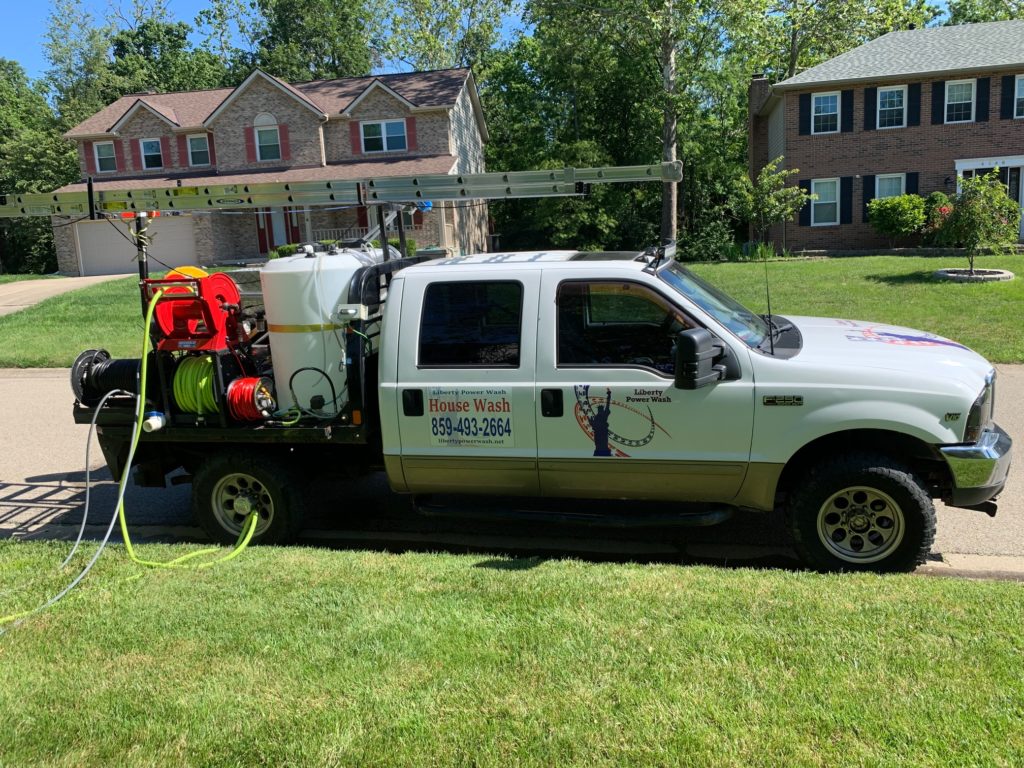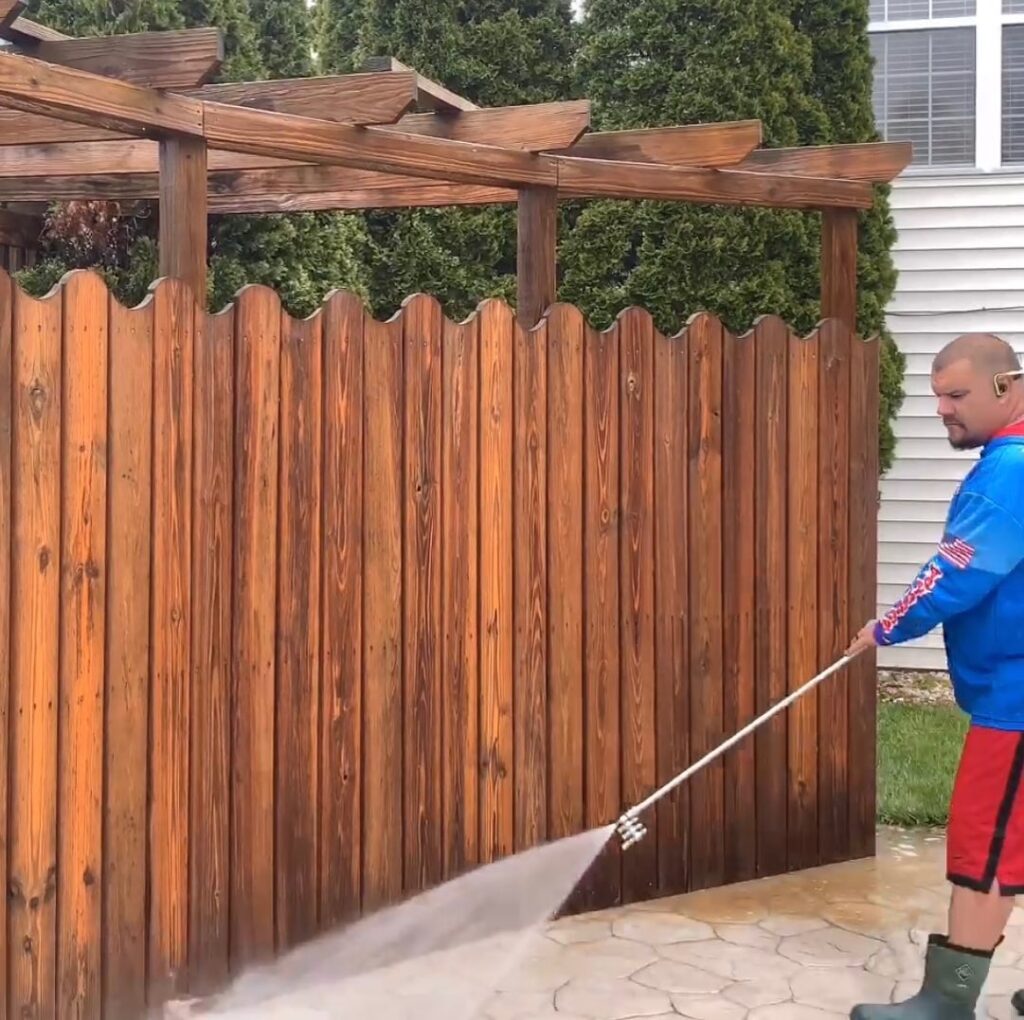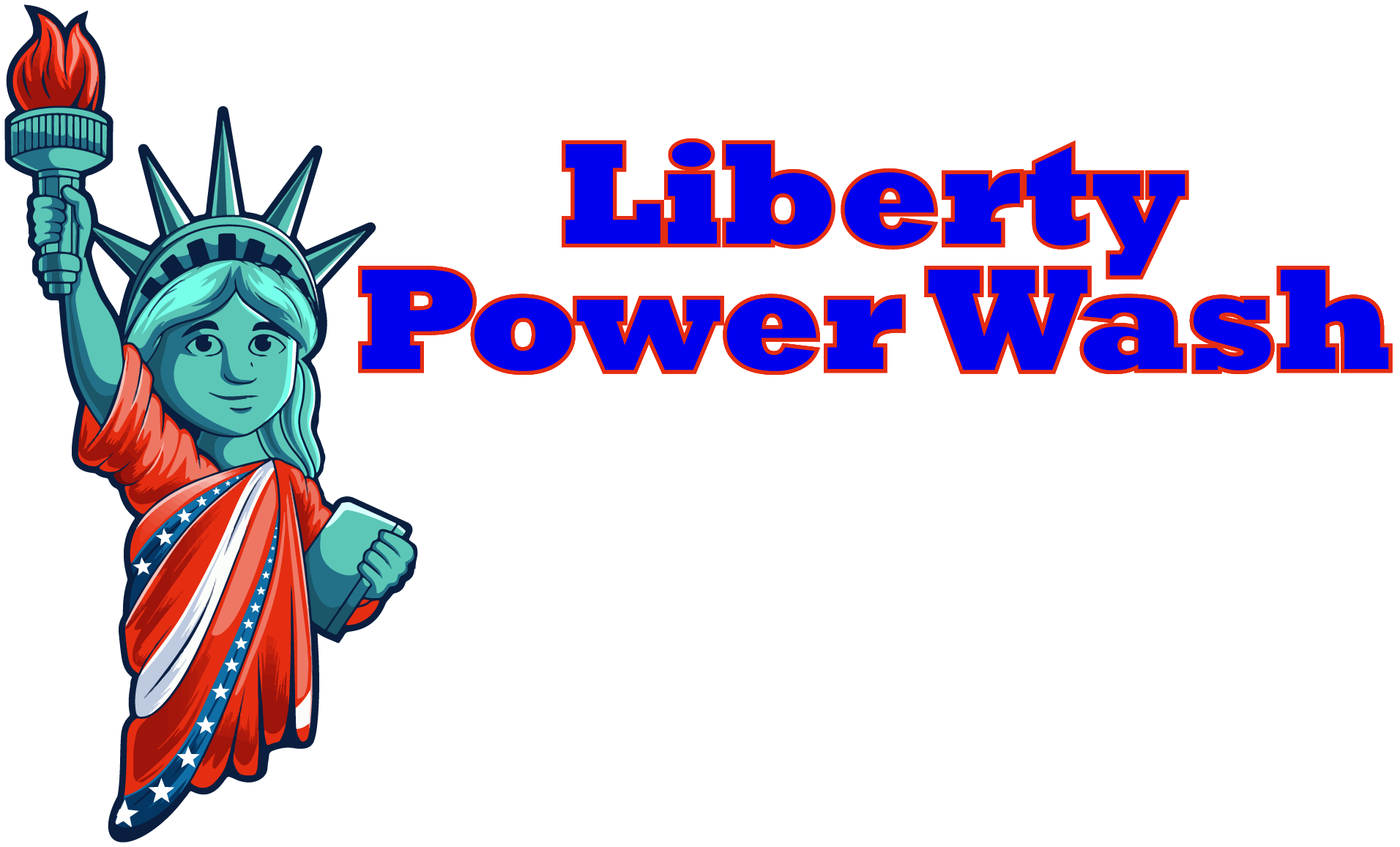Soft washing and power washing are two distinct methods of cleaning surfaces. While soft washing uses low-pressure water and specialized cleaning solutions to gently remove dirt and stains, power washing employs high-pressure water to tackle tough grime. Understanding the differences between soft washing and power washing is crucial in maintaining and preserving your property. In this article, we will explore the nuances of soft washing and power washing, highlighting their advantages and the surfaces they are most suitable for, helping you make an informed decision for your specific cleaning needs.

When comparing the two methods, soft washing has several pros and cons. The low-pressure application reduces the risk of damage to surfaces, making it safer for delicate materials. However, soft washing may require the use of chemical solutions, which can have an environmental impact.
Power washing, on the other hand, is highly effective in removing tough stains and dirt. It does not require the use of chemical solutions, making it more environmentally friendly. However, the high-pressure water can cause damage to certain surfaces if not used correctly.
The Process of Soft Washing
During the process of soft washing, a low-pressure spray is used to apply a specialized cleaning solution to the surface being treated. This method is highly effective for cleaning delicate surfaces, such as roofs, siding, and decks, without causing any damage. Soft washing is often preferred over power washing because it eliminates the risk of high-pressure water causing cracks or other forms of damage.
One of the advantages of soft washing is its ability to effectively remove dirt, grime, algae, and other stains from surfaces. The specialized cleaning solution used in soft washing is designed to penetrate deep into the surface, breaking down and eliminating contaminants. This results in a thorough clean that lasts longer than traditional power washing methods.
The equipment used for soft washing includes a low-pressure sprayer, specialized nozzles, and a chemical cleaning solution. These tools are specifically designed to provide a gentle yet effective cleaning process. Safety precautions are also taken during soft washing to protect both the operator and the surfaces being cleaned. This includes wearing protective gear and ensuring proper ventilation when using the cleaning solution.
The benefits of soft washing extend beyond just a clean surface. It also helps maintain the integrity of the treated surface by preventing damage that can occur from high-pressure water. Soft washing is an effective and safe method for removing stains and maintaining the beauty and longevity of various surfaces.
The Process of Power Washing

Power washing is a high-pressure cleaning method that utilizes water to remove tough stains and debris from various surfaces. This powerful cleaning technique offers several benefits for homeowners and business owners alike. Here are some key points about the process of power washing:
Benefits of power washing:
- Effectively removes dirt, grime, and stains from surfaces
- Restores the appearance of surfaces, making them look clean and revitalized
- Helps prevent the growth of mold, mildew, and algae
- Increases the lifespan of surfaces by removing harmful contaminants
- Enhances the curb appeal and value of properties
Equipment needed for power washing:
- High-pressure washer with adjustable settings
- Various nozzles for different cleaning tasks
- Detergent or cleaning solutions
- Safety gear, including goggles, gloves, and protective clothing
Safety precautions for power washing:
- Read and follow the manufacturer’s instructions for the equipment
- Avoid using excessive pressure on delicate surfaces
- Keep a safe distance from electrical outlets and fixtures
- Wear protective gear to prevent injuries and exposure to chemicals
- Use caution when working on elevated surfaces to prevent falls
Common surfaces that can be power washed:

- Sidewalks and driveways
- Decks and patios
- Exterior walls and fences
- Roofing and gutters
- Concrete and brick surfaces
Key Differences Between Soft Washing and Power Washing
Soft washing utilizes low-pressure water combined with a biodegradable cleaning solution to gently remove dirt, grime, mold, and other stains from surfaces. This method is ideal for delicate surfaces such as roof shingles, siding, stucco, and painted surfaces. The low-pressure application ensures that the surface is not damaged or stripped of paint or protective coatings.
In terms of cost, soft washing is generally more expensive than power washing. This is due to the specialized equipment and cleaning solutions required for soft washing. Power washing, on the other hand, is more cost-effective as it requires less specialized equipment.
When to Choose Soft Washing
When considering the appropriate cleaning method for your needs, it is essential to carefully evaluate the specific surface and desired level of cleanliness. Here are some key factors to consider when you’re looking at soft washing and power washing:
Benefits of soft washing:
- Gentle on delicate surfaces, such as roofs and siding
- Uses low-pressure water and specialized cleaning solutions
- Effectively removes dirt, mold, algae, and other contaminants
- Provides long-lasting results without causing damage
- Helps prevent future growth and stains
When to choose soft washing:
- When cleaning surfaces that are prone to damage or require a gentle approach
- When dealing with organic stains like mold or algae
- When seeking a longer-lasting clean
Soft washing and power washing are two distinct cleaning methods with their own advantages and disadvantages. Soft washing is ideal for delicate surfaces, using low-pressure water and specialized cleaning solutions to effectively remove dirt and stains without causing damage. It is a safer option for materials like roof shingles, siding, and painted surfaces. On the other hand, power washing is more suitable for hard surfaces like concrete, brick, and stone, using high-pressure water to tackle tough stains and grime. It is a faster and more cost-effective method, but caution must be taken to avoid damage to delicate surfaces. When choosing the right cleaning method for your needs, consider the specific surface, desired level of cleanliness, and environmental impact.
Frequently Asked Questions

What Are The Costs Associated With Both Soft Washing And Pressure Washing?
The initial costs associated with soft washing and power washing vary, depending on the supplies needed for each process.
Soft washing requires minimal equipment at a low cost, such as a garden hose and mild detergents; whereas pressure washing necessitates more expensive tools like pumps, hoses, nozzles, and pressure washers that range in price from hundreds to thousands of dollars.
Additionally, water usage is significantly higher with pressure washing due to its high-pressure jets which can reach up to 4500 psi (pounds per square inch).
By comparison, soft washing uses less water because it relies upon chemical solutions which have been applied via lower-pressure sprayers.
What Type Of Surfaces Can Soft Washing And Power Washing Be Used On?
When it comes to cleaning surfaces, soft washing and power washing are two popular methods.
Soft washing uses chemical-based solutions for a gentler approach that is suitable for delicate materials such as wood, shingles, stucco, and vinyl siding.
Pressure washing utilizes high-pressure water jets to effectively remove dirt from hard surfaces like concrete or brick pavers with minimal use of chemicals and no damage to the surface or surrounding environment due to improved water quality.
Both methods can be used on decks, pavements, driveways, patios, fences and other outdoor structures but care should always be taken when using either option.
What Safety Precautions Should Be Taken When Using Soft Washing and Power Washing?
When using soft washing or pressure washing, both equipment and chemical safety must be taken into consideration.
Personal protective equipment such as eye protection, gloves, long sleeved shirts and pants should always be worn to avoid contact with chemicals or debris.
Additionally, any necessary safety measures for the specific type of cleaning being done should also be followed, such as not operating a pressure washer in wet weather conditions.
It is important to understand all instructions given by the manufacturer before use and take care when handling chemicals associated with either process.
Are There Any Environmental Benefits To Using Soft Washing Or Pressure Washing?
Soft washing and pressure washing have environmental benefits if the right techniques are used.
Water conservation is a major priority when working with soft or pressure washers, as they can consume large amounts of water during operation.
Additionally, surface protection should be taken into consideration to ensure that chemicals are not overused in cleaning processes which may cause damage to nearby flora and fauna.
If done correctly, both soft and pressure washing can provide an effective means of reducing water waste while still providing thorough cleansing.
How Long Does It Typically Take To Complete A Soft Washing Or Pressure Washing Job?
The time required to complete a soft washing or pressure washing job can depend on many factors, including the size of the area being treated and environmental conditions such as water quality.
Generally speaking, it takes an average of two to four hours for a professional to finish a soft wash job, while a pressure wash may take around one hour depending on surface damage.
It is important that these jobs be completed by professionals in order to ensure proper safety protocols are followed and optimal results are achieved.
If you have any questions about the differences, or what is best for your home, contact us at Liberty Power Wash. We’ll walk you through all your options!
